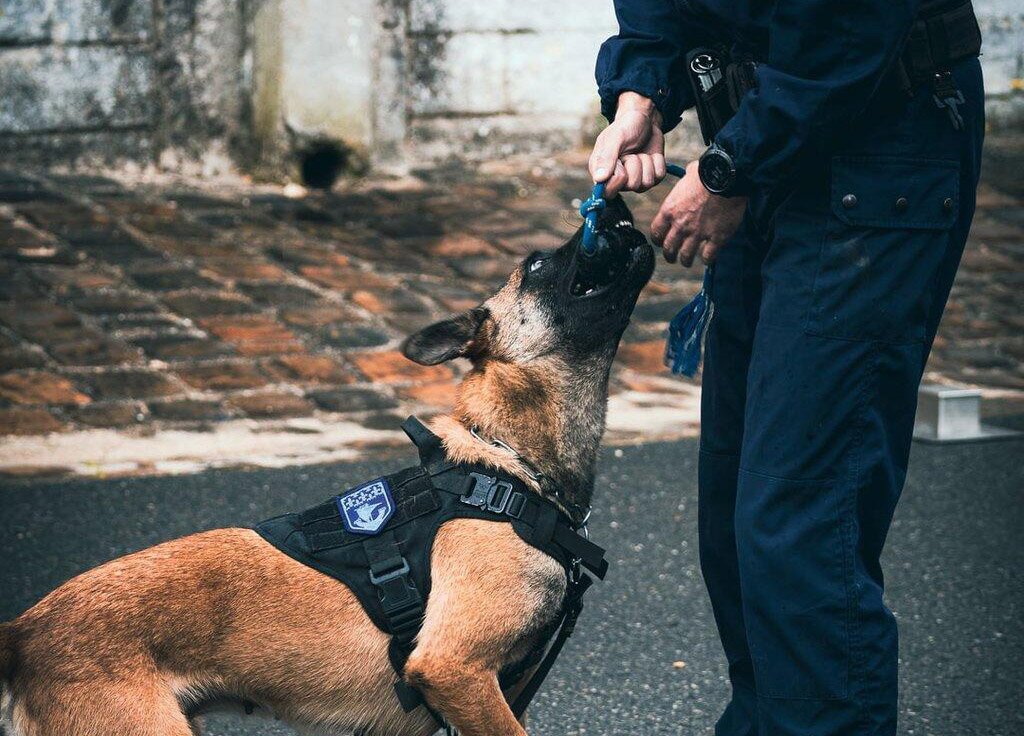
Service dogs are remarkable companions that do much more than just provide affection; they play a crucial role in enhancing the quality of life for individuals with disabilities. These specially trained animals offer support, independence, and companionship, helping their handlers navigate the world with greater confidence.
Whether you’re curious about how service dogs are trained, the specific tasks they can perform, or the legal rights that protect them, this ultimate guide has everything you need to know. Ready to discover the incredible impact service dogs have on lives? Let’s dive in and explore the world of service dogs together!
What is a Service Dog?
Service dogs are different from therapy dogs and emotional support animals. Therapy dogs visit people in hospitals or nursing homes to provide comfort. Emotional support animals provide companionship but do not have special training to perform specific tasks. Service dogs are trained to complete tasks that are specific to their owner’s needs.
Types of Service Dogs
People with impaired vision or blindness benefit from guide dogs. They assist their owners in safely navigating a variety of surroundings.
People who are hard of hearing or deaf can benefit from hearing dogs. They notify their owners of critical noises, such as alarms or doorbells.
People with physical limitations benefit from mobility assistance dogs. They might assist with picking up dropped objects or pulling a wheelchair.
Medical alert dogs are able to identify health issues like hypoglycemia or convulsions. They notify their owners so that they can respond.
Psychiatric service dogs help people with mental health issues, such as anxiety or depression. They can provide comfort and help their owners manage symptoms.
How Service Dogs are Trained
Training a service dog takes time and effort. Most service dogs begin training as puppies. They learn basic commands, such as sit, stay, and come. After mastering these commands, they move on to specialized training.
Specialized training is where the dog learns tasks specific to their future owner’s needs. For example, a guide dog learns how to lead a blind person safely. A medical alert dog learns how to detect changes in their owner’s body and signal when something is wrong.
Training can take up to two years. Professional trainers often conduct the training. Once the dog completes training, they are paired with a person who needs their assistance. This pairing process is important because it helps ensure the dog and owner can work well together.
Benefits of Having a Service Dog
Service dogs provide many benefits to their owners. One major benefit is increased independence. With a service dog by their side, many people can do things they could not do alone. This can boost their confidence and improve their quality of life.
Service dogs also provide emotional support. They can help reduce feelings of anxiety or loneliness. For people with PTSD, a service dog can provide comfort and a sense of security.
Another benefit is the physical support service dogs offer. For example, mobility assistance dogs can help their owners navigate difficult terrain, making it easier to get around.
Legal Rights of Service Dog Owners
Service dog owners have legal rights under the Americans with Disabilities Act (ADA). This law allows service dogs to accompany their owners in public places, including restaurants, stores, and public transportation.
Businesses and organizations must allow service dogs to enter. However, there are some rules. Staff can ask if the dog is a service animal and what tasks it is trained to perform. They cannot ask for documentation or require the dog to wear a vest.
It is important to note that emotional support animals and therapy dogs do not have the same legal rights as service dogs. They may not be allowed in public places unless the property owner permits them.
Caring for a Service Dog
Taking care of a service dog is essential to ensure they stay healthy and happy. Service dogs need regular exercise, a balanced diet, and routine veterinary care. Just like any dog, they should have regular check-ups, vaccinations, and preventative treatments for fleas and ticks.
Training does not stop once the dog is paired with their owner. Ongoing training helps reinforce good behavior and keep the dog sharp. It also strengthens the bond between the dog and owner. If you’re looking for a loyal companion with excellent skills, consider checking out trained Malinois for sale that are ready to assist in various tasks or serve as active pets.
Myths and Misunderstandings
Many myths surround service dogs. One common myth is that any dog can be a service dog. In reality, only properly trained dog for specific tasks can be considered a service dog.
Another myth is that service dogs must wear vests or have special tags. While many owners choose to use vests, it is not a legal requirement. Service dogs can be identified by their behavior, not by their appearance.
Some people believe service dogs are always working and cannot be petted or interacted with. While it is true that service dogs should not be distracted while they are working, it is always a good idea to ask the owner before interacting with the dog.
How to Support Service Dog Teams
Supporting service dog teams is important for creating an inclusive society. If you see a service dog in public, remember that they are working. It is best to avoid distracting them unless you have permission from the owner.
You can also help spread awareness about the importance of service dogs. Educating others about their rights and the role of service dogs can help reduce misunderstandings and improve the experiences of service dog teams. Many people choose to train specific breeds of dogs for protection, as they can provide a sense of security and deter potential threats.
If you are considering getting a service dog, do your research. Find a reputable organization that trains service dogs and can guide you through the process.
The Lifelong Benefits of a Service Dog
Service dogs play a vital role in the lives of many people with disabilities. They provide support, independence, and companionship. Understanding the different types of service dogs, their training, and the benefits they offer can help us appreciate their importance in society.
By supporting service dog teams and advocating for their rights, we can create a more inclusive environment for everyone. If you ever meet a service dog, remember that they are working hard to help their owner. Service dogs are truly remarkable animals that make a difference in the lives of those they serve.
Found this interesting? Read the rest of our blog and learn more!





